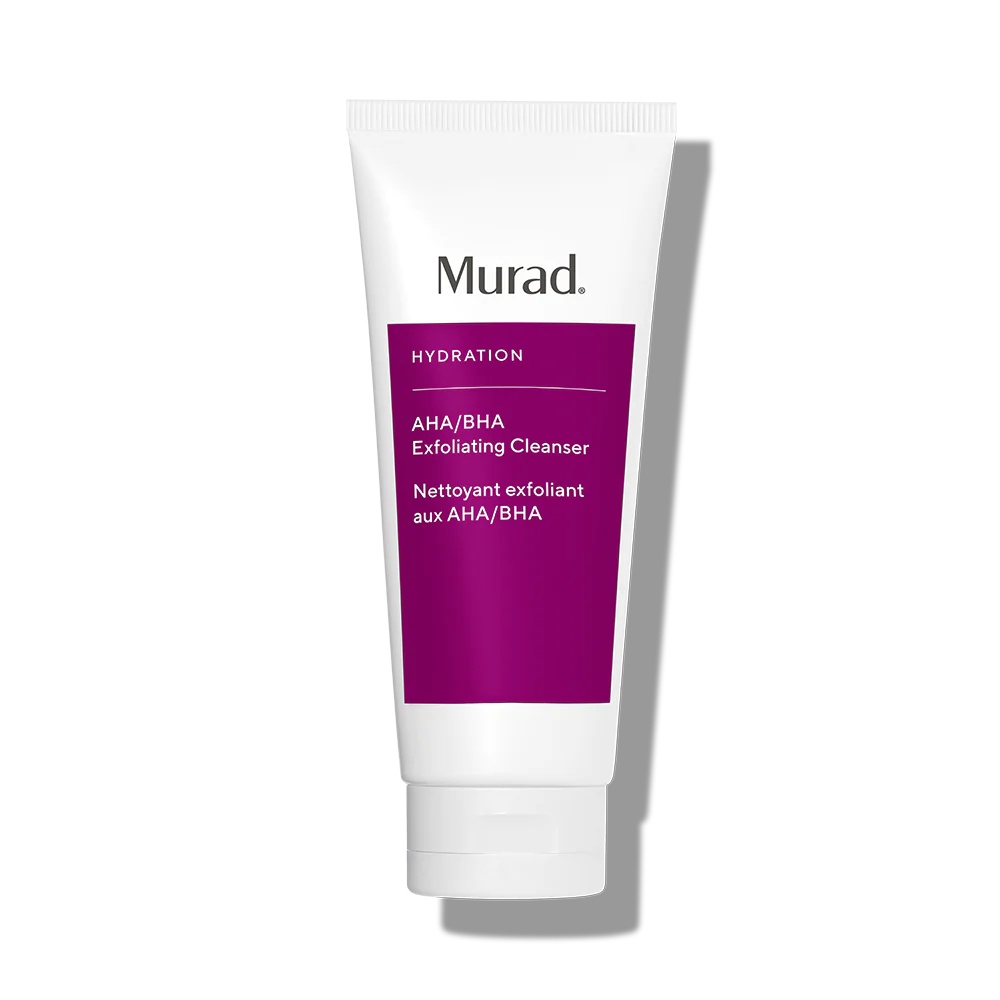
Exfoliating Black skin is a key step in a skincare routine for dark-complexioned people, helping to keep the skin smooth, clear, and healthy-looking.
Here are 6 top reasons to exfoliate Black skin:
Exfoliating Black skin is beneficial for many of the same reasons it is for other skin types, but there are also some specific considerations unique to Black skin that make exfoliation particularly important:
a. Exfoliation Could Help Address Hyperpigmentation: Black skin is more prone to hyperpigmentation, which includes conditions like dark spots, post-inflammatory hyperpigmentation (PIH), and melasma. Exfoliation can help to fade existing hyperpigmentation by promoting the turnover of pigmented skin cells and revealing fresh, evenly pigmented skin underneath.
b. Exfoliation Helps To Prevent Ingrown Hairs: Due to the coiled structure of hair follicles in Black skin, ingrown hairs are a common concern, particularly in areas where hair is regularly shaved or waxed. Exfoliation helps to prevent ingrown hairs by removing dead skin cells that can block hair follicles and cause hairs to grow back into the skin.
c. Exfoliation Fights Ashiness: Black skin can sometimes appear dull or ashy due to a buildup of dead skin cells on the surface. Regular exfoliation helps to slough off these dead cells, revealing smoother, more radiant skin underneath.
d. Exfoliation Helps With Oiliness and Acne: While Black skin tends to produce less oil than some other skin types, it is still susceptible to acne and excess oil production, especially during hormonal changes or periods of stress. Exfoliation can help to prevent breakouts by keeping pores clear of debris and excess oil.
e. Exfoliation Makes Room For More Even Skin: Some individuals with Black skin may experience uneven texture, rough patches, or bumpy skin due to conditions like keratosis pilaris or razor bumps. Exfoliation can help to smooth out these textural irregularities by removing dead skin cells and promoting cell turnover.

f. Exfoliation Has Anti-Aging Benefits: Exfoliation can also help to minimize the appearance of fine lines, wrinkles, and other signs of ageing by encouraging collagen production and promoting skin renewal. This can help to keep the skin looking youthful and vibrant.
How to exfoliate black skin:
Exfoliating Black skin requires a gentle yet effective approach to address specific concerns such as hyperpigmentation, ingrown hairs, and uneven texture.
Here’s how to exfoliate Black skin effectively:
1. Choose the Right Exfoliant: Opt for exfoliating products that are formulated specifically for Black skin and are gentle enough to prevent irritation. Look for chemical exfoliants containing ingredients like glycolic acid, lactic acid, or salicylic acid, which help to dissolve dead skin cells without harsh scrubbing. Avoid physical exfoliants with rough particles, as they can cause micro-tears in the skin.
2. Start Slowly: If you’re new to exfoliation or trying a new product, start with a lower concentration or frequency to allow your skin to adjust. Over-exfoliating can lead to irritation, dryness, and sensitivity, especially for Black skin, which may be more prone to inflammation.
3. Prep Your Skin: Before exfoliating, cleanse your skin with a gentle, hydrating cleanser to remove dirt, oil, and impurities. Pat your skin dry with a clean towel.
4. Apply the Exfoliant: Follow the instructions on the exfoliating product carefully. If using a chemical exfoliant, apply a small amount evenly over your skin, avoiding the delicate eye area. If using a physical exfoliant, gently massage the product onto damp skin using light pressure and circular motions.
5. Be Gentle: Whether you’re using a chemical or physical exfoliant, avoid scrubbing too vigorously, as this can irritate the skin. Instead, use gentle, circular motions to massage the exfoliant into your skin.
6. Focus on Problem Areas: Pay special attention to areas of concern, such as areas prone to hyperpigmentation, ingrown hairs, or rough texture. However, be careful not to over-exfoliate these areas, as it can exacerbate issues.
7. Rinse Thoroughly: After exfoliating, rinse your skin thoroughly with lukewarm water to remove any residue. Make sure all traces of the exfoliant are washed away to prevent irritation.
8. Moisturize: Follow up with a hydrating moisturizer to replenish moisture and soothe the skin. Look for moisturizers containing ingredients like hyaluronic acid, shea butter, or ceramides to lock in moisture and support the skin barrier.
9. Protect Your Skin: Apply a broad-spectrum sunscreen with an SPF of 30 or higher to protect your newly exfoliated skin from sun damage. This is especially important because exfoliation can temporarily increase sun sensitivity.
10. Listen to Your Skin: Pay attention to how your skin responds to exfoliation. If you experience redness, irritation, or excessive dryness, reduce the frequency of exfoliation or switch to a gentler product.
Is Exfoliation the same as Cleansing?
Exfoliation and cleansing are two distinct steps in a skincare routine, each serving different purposes:
While both cleansing and exfoliation are important steps in a skincare routine, they serve different purposes and should be performed separately. Cleansing removes surface impurities, while exfoliation targets dead skin cells and promotes skin renewal. Incorporating both cleansing and exfoliation into your skincare routine can help to keep your skin clean, clear, and healthy.
Here are both processes explained in detail:

A. Cleansing: Cleansing is the process of removing dirt, oil, makeup, and other impurities from the skin’s surface. It helps to keep the skin clean and prevent clogged pores, breakouts, and other skin issues. Cleansing typically involves using a gentle cleanser and water to wash the face, although there are also cleansing wipes and micellar waters available for convenience. Cleansing should be done twice daily, in the morning and evening, to maintain skin health.

B. Exfoliation: Exfoliation is the process of removing dead skin cells from the skin’s surface to reveal smoother, brighter skin underneath. Exfoliation can help to unclog pores, improve skin texture, and enhance the absorption of skincare products. There are two main types of exfoliation: physical and chemical. Physical exfoliation involves using abrasive particles or tools to manually scrub away dead skin cells, while chemical exfoliation involves using acids or enzymes to dissolve dead skin cells. Exfoliation should be done 1-3 times per week, depending on skin type and sensitivity.


